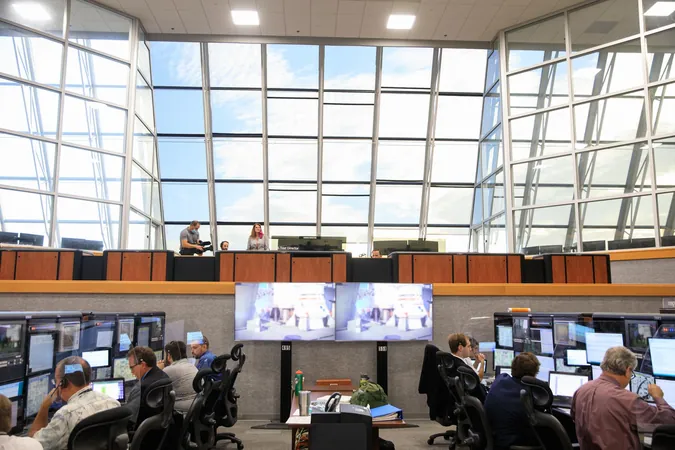
Astronomers Capture Unprecedented Moment: A Planet Forming Around a Distant Star!
2025-07-25
Author: William
In a groundbreaking astronomical discovery, researchers have potentially observed a planet coming to life around the young star HD 135344B, providing new insights into the formation of planetary systems—including our own!
A Stellar Birth in Action!
Utilizing the European Southern Observatory's (ESO) Very Large Telescope in Chile, astronomers focused on HD 135344B, located a staggering 440 light-years away in the constellation Lupus. The star is surrounded by a dense protoplanetary disc bustling with gas and dust, within which scientists have uncovered tangible evidence of a forming planet, complete with swirling spiral structures.
Spirals of Creation!
For the first time ever, scientists have directly identified a planet candidate shaping spiral patterns in a protoplanetary disc. While previous studies noted these spiral arms, they failed to pin down the exact cause until now.
With the aid of the state-of-the-art ERIS (Enhanced Resolution Imager and Spectrograph) instrument, researchers detected a bright signal emanating from the base of one spiral arm—believed to be the glow of a developing planet influencing its environment as it accumulates mass.
A Giant in the Making!
This intriguing planet candidate, estimated at twice Jupiter's mass, orbits its star at a distance comparable to Neptune’s journey around the Sun. Such a discovery not only tantalizes astronomers but also affirms theories about the gravitational dynamics at play in young planetary systems.
A New Era in Planetary Science!
Since the installation of the ERIS instrument on the VLT in 2022, the capabilities of direct imaging of nascent planetary systems have escalated dramatically. Astronomers can now peer deeper into dusty regions around young stars and spot faint objects that previous technologies missed.
Exploring the Cosmos Further!
In an exciting parallel study, another team employed ERIS to scrutinize the young star V960 Mon, which also features a spiral-patterned disc. They observed gravitational instabilities that hint at the potential for planets or brown dwarfs to form. The researchers discovered a luminous object near one spiral arm, the nature of which remains uncertain. It could either be a budding planet or a brown dwarf, a body too large to be classified as a planet but not massive enough to ignite into a star.
If confirmed, this would herald the first compelling evidence of such an object emerging through gravitational instability.
Witnessing the Birth of Worlds!
These incredible observations not only provide a front-row seat to the cosmic ballet of planet formation as it unfolds, but also deepen our understanding of how planets—including those in our solar system—come into existence and evolve.









 Brasil (PT)
Brasil (PT)
 Canada (EN)
Canada (EN)
 Chile (ES)
Chile (ES)
 Česko (CS)
Česko (CS)
 대한민국 (KO)
대한민국 (KO)
 España (ES)
España (ES)
 France (FR)
France (FR)
 Hong Kong (EN)
Hong Kong (EN)
 Italia (IT)
Italia (IT)
 日本 (JA)
日本 (JA)
 Magyarország (HU)
Magyarország (HU)
 Norge (NO)
Norge (NO)
 Polska (PL)
Polska (PL)
 Schweiz (DE)
Schweiz (DE)
 Singapore (EN)
Singapore (EN)
 Sverige (SV)
Sverige (SV)
 Suomi (FI)
Suomi (FI)
 Türkiye (TR)
Türkiye (TR)
 الإمارات العربية المتحدة (AR)
الإمارات العربية المتحدة (AR)